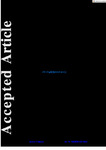Wave, Tide and Topographical Controls on Headland Sand Bypassing
| dc.contributor.author | King, EV | |
| dc.contributor.author | Conley, Daniel | |
| dc.contributor.author | Masselink, Gerd | |
| dc.contributor.author | Leonardi, N | |
| dc.contributor.author | McCarroll, Jak | |
| dc.contributor.author | Scott, Tim | |
| dc.contributor.author | Valiente, NG | |
| dc.date.accessioned | 2021-08-10T11:17:51Z | |
| dc.date.available | 2021-08-10T11:17:51Z | |
| dc.date.issued | 2021-07-27 | |
| dc.identifier.issn | 2169-9275 | |
| dc.identifier.issn | 2169-9291 | |
| dc.identifier.other | ARTN e2020JC017053 | |
| dc.identifier.uri | http://hdl.handle.net/10026.1/17548 | |
| dc.description.abstract |
<jats:title>Abstract</jats:title><jats:p>Embayed beaches separated by irregular rocky headlands represent 50% of global shorelines. Quantification of inputs and outflows via headland bypassing is necessary for evaluating long‐term coastal change. Bypassing rates are predictable for idealized headland morphologies; however, it remains to test the predictability for realistic morphologies, and to quantify the influence of variable morphology, sediment availability, tides and waves‐tide interactions. Here we show that headland bypassing rates can be predicted for wave‐dominated conditions, and depend upon headland cross‐shore length normalised by surf zone width, headland toe depth and spatial sediment coverage. Numerically modeled bypassing rates are quantified for 29 headlands under variable wave, tide and sediment conditions along 75 km of macrotidal, embayed coast. Bypassing is predominantly wave‐driven and nearly ubiquitous under energetic waves. Tidal elevations modulate bypassing rates, with greatest impact at lower wave energies. Tidal currents mainly influence bypassing through wave‐current interactions, which can dominate bypassing in median wave conditions. Limited sand availability off the headland apex can reduce bypassing by an order of magnitude. Bypassing rates are minimal when cross‐shore length >5 surf zone widths. Headland toe depth is an important secondary control, moderating wave impacts off the headland apex. Parameterisations were tested against modeled bypassing rates, and new terms are proposed to include headland toe depth and sand coverage. Wave‐forced bypassing rates are predicted with mean absolute error of a factor 4.6. This work demonstrates wave‐dominated headland bypassing is amenable to parameterization and highlights the extent to which headland bypassing occurs with implications for embayed coasts worldwide.</jats:p> | |
| dc.language | en | |
| dc.language.iso | en | |
| dc.publisher | American Geophysical Union (AGU) | |
| dc.subject | headland bypassing | |
| dc.subject | sediment transport | |
| dc.subject | Delft3D | |
| dc.subject | sediment budget | |
| dc.subject | wave-current interactions | |
| dc.subject | embayed beaches | |
| dc.subject | wave-tide interactions | |
| dc.subject | sediment availability | |
| dc.title | Wave, Tide and Topographical Controls on Headland Sand Bypassing | |
| dc.type | journal-article | |
| dc.type | Journal Article | |
| plymouth.author-url | https://www.webofscience.com/api/gateway?GWVersion=2&SrcApp=PARTNER_APP&SrcAuth=LinksAMR&KeyUT=WOS:000690758000025&DestLinkType=FullRecord&DestApp=ALL_WOS&UsrCustomerID=11bb513d99f797142bcfeffcc58ea008 | |
| plymouth.issue | 8 | |
| plymouth.volume | 126 | |
| plymouth.publication-status | Published | |
| plymouth.journal | Journal of Geophysical Research: Oceans | |
| dc.identifier.doi | 10.1029/2020jc017053 | |
| plymouth.organisational-group | /Plymouth | |
| plymouth.organisational-group | /Plymouth/Faculty of Science and Engineering | |
| plymouth.organisational-group | /Plymouth/Faculty of Science and Engineering/School of Biological and Marine Sciences | |
| plymouth.organisational-group | /Plymouth/PRIMaRE Publications | |
| plymouth.organisational-group | /Plymouth/REF 2021 Researchers by UoA | |
| plymouth.organisational-group | /Plymouth/REF 2021 Researchers by UoA/UoA07 Earth Systems and Environmental Sciences | |
| plymouth.organisational-group | /Plymouth/Research Groups | |
| plymouth.organisational-group | /Plymouth/Research Groups/Marine Institute | |
| plymouth.organisational-group | /Plymouth/Users by role | |
| plymouth.organisational-group | /Plymouth/Users by role/Academics | |
| plymouth.organisational-group | /Plymouth/Users by role/Researchers in ResearchFish submission | |
| dcterms.dateAccepted | 2021-05-12 | |
| dc.rights.embargodate | 2021-8-12 | |
| dc.identifier.eissn | 2169-9291 | |
| dc.rights.embargoperiod | Not known | |
| rioxxterms.versionofrecord | 10.1029/2020jc017053 | |
| rioxxterms.licenseref.uri | http://www.rioxx.net/licenses/all-rights-reserved | |
| rioxxterms.licenseref.startdate | 2021-07-27 | |
| rioxxterms.type | Journal Article/Review | |
| plymouth.funder | Physical and biological dynamic coastal processes and their role in coastal recovery (BLUE-coast)::NERC |


